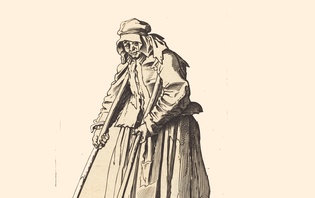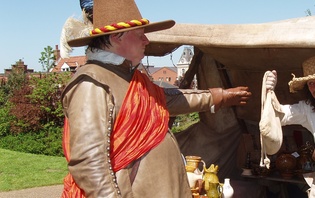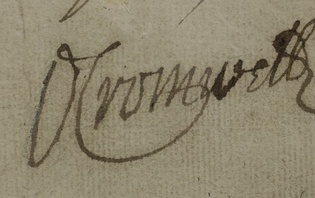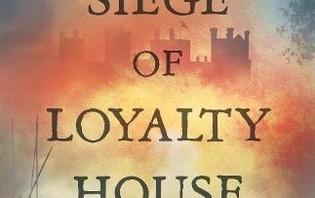A Brief History of Time (in Civil War Petitions)
As explained elsewhere in this website, the project team is currently hard at work locating and transcribing thousands of documents which will eventually be made freely available via this website. In addition to these verbatim transcriptions, the team aims to produce a modernised text version of each document. However, even modernised texts can still be confusing, not least because of the various ways in which time was measured in the seventeenth century. Here, David Appleby sketches out the chronological minefield, and finds that the text of some petitions suggests that the poorer and middling sorts of people tended to mark the passing of time rather differently from the social elite…
In February 1582, Pope Gregory XIII issued a decree to remove ten days from the calendar. He further ordered that every year thereafter should commence on 1 January. Gregory’s intent was to reduce confusion by aligning the calendar year more closely with the solar year. However, reflecting the bitter religious divisions in Europe at the time, Protestant states such as England pointedly continued to use the old-style Julian calendar (so named because it had been established by Julius Caesar in 45BC/BCE). This meant that throughout the whole of the seventeenth century, the calendar year in the British Isles began on 25 March, rather than 1 January. The festival of the Annunciation of the Blessed Virgin had long since ceased to be observed in Protestant England, so 25 March was known simply as ‘Lady Day’. Even in the seventeenth century, many English people (particularly those trading with Europe) were beginning to consider the Julian system inconvenient but it was not until George II’s reign that the ‘New Style’ dating was written into law. Following a vote in Parliament, it was declared that 1752 would begin on 1 January.
The potential for confusion caused by the clash of these ‘Old’ and ‘New’ styles was never better demonstrated than in 1813, when workmen accidentally broke through the wall of a vault under St George’s chapel in Windsor. On investigation, it was found that one of the coffins in the vault contained the body of King Charles I. The engraved silver plate on the coffin lid recorded that the king had met his end in 1648 – whereas, by the modern (post-1751) calendar, he had actually been executed on 30 January 1649. Interestingly, a commemorative stone laid in the chapel in the nineteenth century copied the date on the coffin plate, again suggesting that Charles had died in 1648. Did those who commissioned the marble slab do this deliberately, or were they unaware of their error? Even professional historians are sometimes caught out.
A common method used by historians and archivists to avoid confusion between ‘Old Style’ and ‘New Style’ dating is to transcribe any affected dates by noting both years. The date of Charles I’s execution might therefore be transcribed as 30 January 1648/9. This method was already in use in the seventeenth century for precisely the same reason. Officials who did not take such precautions sometimes got themselves in a muddle: one Nottinghamshire Parliamentary Committee warrant to pay an officer’s widow named Anne Nethercotes was erroneously dated ’28 March 1645’, despite the fact that it was clearly issued on 28 March 1646. It seems that the scribe forgot that Lady Day had come and gone, and that the new calendar year had started.
The Georgian Act of Parliament which confirmed 1 January as the first day of the year also brought the British calendar into line with its Gregorian counterpart. Taking leap years into account, the discrepancy was even greater than it had been in Pope Gregory’s time, so Parliament ordered that 2 September 1752 be followed by 14 September. It is often claimed that the poorer sort rioted and demanded that the lost days to be restored to them, but there is no tangible evidence that such disorder ever took place. Red-letter dates, such as 5 November (Bonfire Night) and 30 January (the anniversary of the Regicide), remained untouched, although strictly speaking all should have been moved by the requisite number of days. Historians have generally followed this convention without comment. The only real problem arises when researchers have to deal with an exchange of letters between British and Continental correspondents, when it can sometimes seem that letters are being replied to before they have even been written!
Another chronological trap hidden in the quarter sessions minute books concerns the regnal years of Charles II’s reign. Restoration officials habitually pretended that the ‘Interregnum’ (i.e. the Commonwealth and the Cromwellian Protectorate) had never happened, dating Charles II’s accession from the death of his father on 30 January 1648/9, rather than the restoration of the monarchy in May 1660. In such circumstances, the ‘Old Style’ Julian calendar reinforced efforts to recreate the pre-war ancien regime. All of which explains why the preamble to the Michaelmas quarter sessions in Essex in October 1660 notes that the court is being held in the twelfth year of the king’s reign – implying that the reign had commenced in 1648/9.
In contrast to the exact, often politicised calendar utilised by the gentry, phrases used in the petitions of maimed soldiers and war widows suggest that the common people still tended to mark the passing of time with more traditional milestones. It is particularly interesting to see the survival of traditional Catholic terminology in popular Protestant discourse. Winifred Badge, who petitioned the Parliamentary County Committee for Nottinghamshire on 30 January 1644/5, stated that her husband had been slain ‘on Lamass Day’ whilst besieging Wingfield Manor. Lamas, or ‘loaf-mass’ was an old Anglo-Saxon festival, Lamas Day itself occurring on 1 August. Lamas loomed large in the lives of common country folk not least because it was traditionally the time on which certain privately-owned land had to be opened up to common grazing. It is equally revealing that the term ‘Christmas Day’ surfaces in a petition submitted by Thomas Collishaw of Bilborough, Nottinghamshire, in April 1648. The petition declared that in addition to his own sufferings Collishaw desired recompense for a horse which he had bought on Christmas Day 1642, and had ridden ‘all Christmas’ until it fell lame. Collishaw – and the amanuensis who wrote the parliamentarian cavalry trooper’s petition – were presumably aware that Christmas, Easter and Whitsun had been banned by Parliament in June 1647, on the grounds that the three festivals had no basis in Scripture, and were therefore sinful.
Of course, the Civil Wars gave maimed soldiers and bereaved families new and more distressing milestones with which to mark the passing of time. These milestones included not only the bloody consequences of huge set-piece battles such as Edgehill (1642), and sieges such as the two at Lichfield in 1643, but also bitter fighting for relatively obscure places such as Wingfield Manor (Derbyshire, August 1644) and Shelford House (Nottinghamshire, November 1645). The course of some people’s lives would be changed by otherwise inconsequential incidents. It is very doubtful whether Martha Emming of Coggeshall, Essex had previously heard of Heslington in Yorkshire, but she would forever remember it as the place where her husband Daniel was killed. The evidence suggests that he was one of the ‘five or six’ hitherto nameless parliamentarian soldiers who died there on 6 June 1644, as Parliament’s Eastern Association army probed York’s outer defences.
Recommended reading:
R. Cheney (revised Michael Jones), A Handbook of Dates for Students of British History (Cambridge: Cambridge University Press, 2000).
David Cressy, Bonfires and Bells: National Memory and the Protestant Calendar in Elizabethan and Stuart England (Stroud: Sutton Publishing, 2004).
Keith Wrightson, ‘Popular senses of past time: dating events in the North Country, 1615-1631’, in Michael Braddick and Phil Withington (eds.), Popular Culture and Political Agency in Early Modern Britain (Woodbridge, 2017), pp. 91-107.










